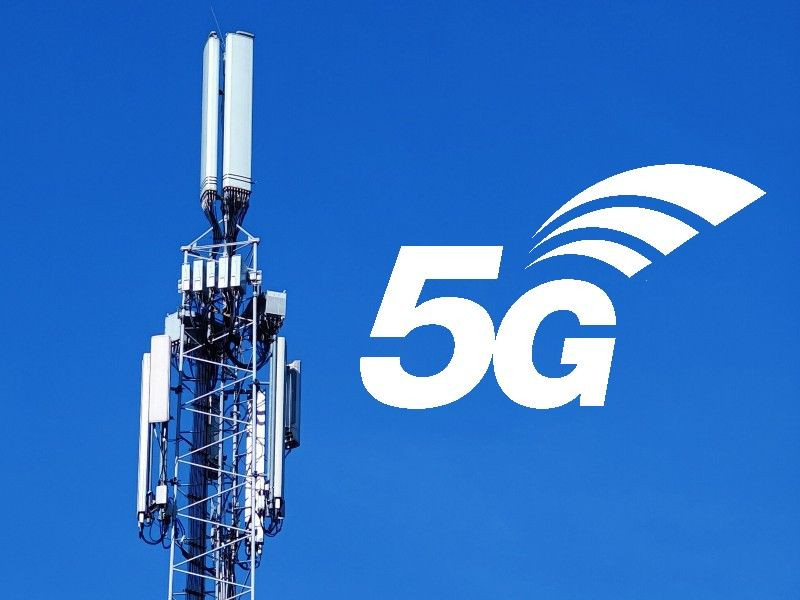Will 5G become the dominant technology by 2030?
(Baonghean.vn) - According to a newly published report by the independent research and analysis organization GSMA Intelligence (GSMi) of the Global Mobile Suppliers Association (GSMA), 5G will become the dominant technology and account for 56% of total global connections by 2030.
New figures from GSMAid show that 5G connections are expected to account for more than half (51%) of all mobile connections by 2029, rising to 56% by 2030, making 5G the dominant technology globally.
5G is the fastest-deploying mobile generation to date, surpassing one billion connections by the end of 2022, growing to 1.6 billion by the end of 2023 and expected to reach 5.5 billion by 2030.
As of January 2024, 261 mobile operators in 101 countries have launched commercial 5G services, and more than 90 operators from 64 markets have committed to deploying 5G.

Among the 261 mobile operators that have commercialized 5G, 47 operators have deployed 5G networks based on the standalone architecture (5G Standalone), while 89 operators are expected to apply new technologies such as network slicing, Ultra-Reliable and Low-latency Communications (uRLLC) to 5G networks in the near future.
The proliferation of standalone 5G networks and better support for private and dedicated networks will enable the connection of a large number of Internet of Things (IoT) devices and help realize the global IoT vision for enterprises.
GSMAi data shows that the enterprise segment currently has 10.7 billion IoT connections compared to 10.5 billion consumer connections. With this growth momentum, the number of IoT connections in enterprises is expected to increase to 38.5 billion by 2030, with IoT applications in smart buildings and smart manufacturing accounting for 34% and 16% of total enterprise connections, respectively.
In addition to the development of standalone 5G networks, the emergence of 5G-Advanced (or 5.5G) networks with 3GPP Release 18 will be another important milestone of 5G in IoT deployment, playing a role in driving investment in 5G in the period 2024 - 2025.
According to GSMA, more than half of the vendors expect to start deploying 5G-Advanced within a year of commercialization, thanks to priority use cases such as 5G multicast services and low-cost IoT support. 5G multicast services is a new feature introduced in 5G-Advanced (5G Release 18) that allows efficient delivery of content to multiple devices at the same time. It operates on a new 5G network architecture that leverages features such as channel sharing and location-based delivery to optimize the use of network resources.
Mobile data traffic is also forecast to quadruple between 2024 and 2030, with 5G coverage and capacity expansion playing a key role, highlighting the importance of continued investment in network infrastructure by mobile operators worldwide. Global monthly mobile data traffic per connection is forecast to increase from 12.8 GB in 2023 to 47.9 GB in 2030.
The GSMA report also found that the use of generative AI technology is on the rise, with 56% of mobile operators currently testing applications based on generative AI technology. This will be driven by applications including the use of generative AI-powered chatbots for customer care operations or the continued development of AI-generated video and music content.
Commenting on the development of 5G technology, Peter Jarich, head of GSMAid, said: “The initial success of 5G has been driven by the use of Enhanced Mobile Broadband (eMBB) and the network traffic requirements associated with eMBB. Opportunities are now emerging in areas including monetization of application programming interfaces (APIs) and technologies that enable the deployment of low-cost, energy-efficient, and wide-ranging IoT devices (known as 5G RedCap) for enterprise IoT, all supported by 5G-Advanced and 5G standalone networks.”
GSMA also stressed that new use cases will bring new revenue streams to mobile operators. In addition, with the increasing deployment of standalone 5G networks, a new charging standard is needed to support the deployment of advanced network services and flexible billing processes offered by standalone 5G core networks.
GSMAi said that this organization has cooperated with its members, including major mobile network operators in the world such as AT&T (USA), Deutsche Telekom (Germany), Swisscom (Switzerland) and Vodafone (UK) to develop and launch the new billing standard "Billing and Charging Evolution - BCE" to replace the old billing solution "Transferred Account Procedures - TAP".
The new BCE charging standard is seen as a simplified charging model and will be mandatory for mobile operators wanting to deploy standalone 5G networks.
In addition, mobile network operators allowing third parties, such as application developers and enterprises, to access certain mobile network functions and data through APIs will also open up a new trend for mobile operators to maximize returns on 5G investments and generate revenue beyond the traditional approach of selling connectivity services.
In Vietnam, last March, the Ministry of Information and Communications organized 3 radio frequency auctions for 4G/5G, bringing in more than 10,000 billion VND to the state budget.
As a result, the Military Industry - Telecommunications Group won the auction for the B1 frequency band (2500-2600 MHz) with a price of 7,533,257,500,000 VND. The Vietnam Posts and Telecommunications Group won the auction for the C2 frequency band (3700-3800 MHz) with a price of 2,581,892,500,000 VND.
As for the C3 frequency band (3800-3900 MHz), because only 1 enterprise paid a deposit to participate in the auction, and there was not enough minimum number of enterprises eligible to participate in the auction according to the provisions of the Law on Asset Auction, the auction of the C3 frequency band block was unsuccessful.
The successful auction of the above frequency bands is a necessary condition and premise for telecommunications enterprises to commercialize 5G nationwide in 2024, concretizing the goal of universalizing national digital infrastructure, promoting the development of digital applications and digital service ecosystems, creating new momentum for economic growth and increasing labor productivity.





